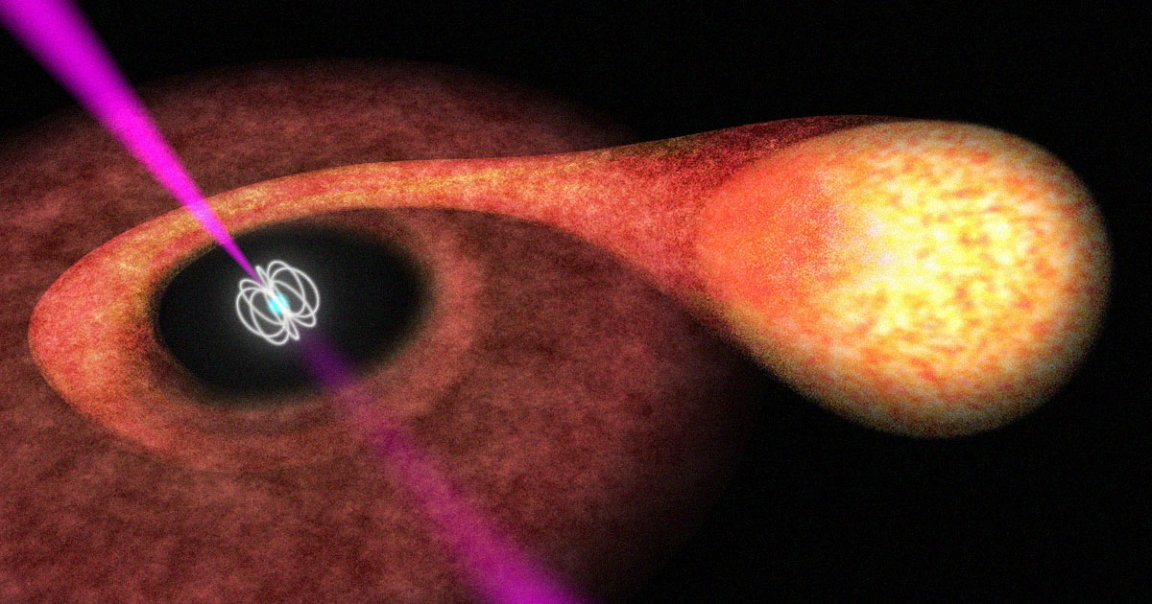
Die In the Sky
Watch out, because this thing eats entire stellar masses: a rapidly rotating collapsed star known as a pulsar is making a meal out of its neighboring star, nearly devouring it whole.
That engorging has already turned the pulsar into the densest neutron star ever observed, according to scientists who observed the cosmic collision. Weighing in at 2.35 solar masses after its meal, it’s now the heaviest neutron star ever recorded, too.
Neutron stars are some of the densest objects in the Universe — so dense that, in one case, just a sugar cube-sized piece of one would weigh 100 million tons. They form when a much larger star collapses in on itself during a supernova. In the aftermath, a neutron star may end up spinning rapidly — 707 times per second, in this case — which makes it a pulsar.
Death Star
Turns out this pulsar, designated PSR J0952-0607, was pretty hungry. It’s what’s known as a “black widow” pulsar, a reference to how female black widow spiders eat the companion male after mating. If a pulsar and another star drift too close, the ridiculously concentrated gravity of the pulsar shreds the unsuspecting neighbor to bits, siphoning its mass.
Things get weird when matter gets as dense as it does in a neutron star. If PSR J0952-0607 is as dense as the scientists predict, the scientists say its interior may have to be a mixture of quarks and nuclei, as opposed to whole atoms. If things get any heavier, a neutron star should collapse into a black hole, but the threshold at which that occurs is unknown.
“We know roughly how matter behaves at nuclear densities, like in the nucleus of a uranium atom,” said one of the study’s authors Alex Filippenko, a professor of astronomy at UC Berkeley, in a press release. “A neutron star is like one giant nucleus, but when you have one-and-a-half solar masses of this stuff, which is about 500,000 Earth masses of nuclei all clinging together, it’s not at all clear how they will behave.”
The scientists hope that by observing these “black widow” pulsars, they can determine just how large neutron stars can be, and what’s happening at the quantum level.
More on stars: Scientists Predict That The Solar System Could Collapse If a Star Flew Too Close